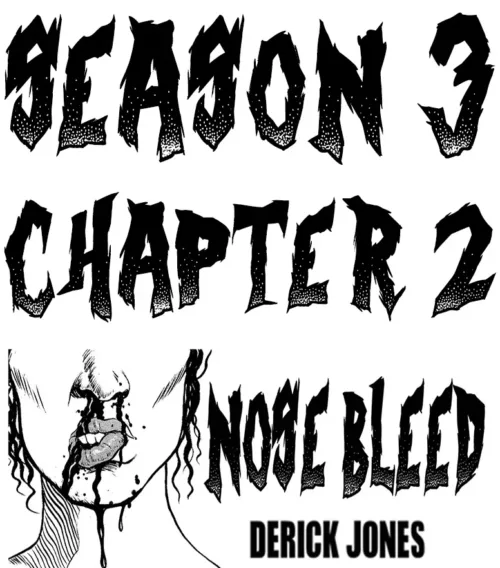Episode 270 – In this week’s installment, Roberta shares two opportunies. Peep Project and Bala Art Walk. In this conversation, Roberta discusses the Bala Art Walk which had a due date of July 30th which is now passed but the organizers have clarified that anyone that applies after the deadline will be waitlisted. I give a list of events happening this week. Roberta and I will also discuss NEA budget and of course Coho Salmon. We hope you enjoy this episode. ~Ryan

Click to expand the podcast transcript
Roberta: Hi everyone, it’s Roberta.
Ryan: And this is Ryan and this is the midweek news
Roberta: On Artblog radio. Good morning, Ryan. How are you today?
Ryan: Good morning, Roberta. Good. I’m doing well.
Roberta: Good me too. Let’s just hit the ground running and go for the gusto here. I want to talk to everybody about two opportunities that I want to pass on to you.
For artists Peep Projects, which is the tiny little gallery in the crane arts building, doing great big work, literally and figuratively. We admire what Libby Rosa, who’s the founder of that gallery and director of that gallery is doing. So they are having a two-person juried show coming up. You can apply for this.
The deadline is September 6th. It’s going to be curated by a new, to me, at any rate, PAFA person who is Leah Triplett Harrington, director of Exhibitions and Contemporary Curatorial Initiatives at PAFA. The other juror is Jacob Todd Broussard, who’s an artist and previously showed at Peep. So that sounds like a really good opportunity.
Get a lot of eyes on you.
The second Thursday phenomenon, the openings at Crane Arts bring in a lot of people. So it’s a very good venue to show your arts and it’s a good network to be in at Peep, I believe, and Crane Arts. So that’s one opportunity that I think you should carpe diem and apply for, and we’ll put links to how to do that in, in the post, the written post.
And then, because we all love the arts so much, we often sometimes participate in more than one nonprofit in the arts. And so I am on a board of another art nonprofit called Bala Avenue of the Arts. Bala Avenue is in my neighborhood. I live in Bala Cynwyd. This little nonprofit, which started in 2023, wants to revitalize the neighborhood, or at least that particular stretch.
It’s a little shopping district you can imagine. A cute little shopping district that has a big, although not used now been empty for many years, movie theater in the Egyptian style, so it has a very ornate ceiling, you’ve all probably been in one at some point. We want to revitalize that stretch of Bala Avenue and so the idea is to have an art walk. This year we are partnering with the City Avenue District, which is a special services district, like their center city district, university city district. There’s City Avenue District, and so they’re our partner with Bala Avenue of the Arts to put on the art walk and. This year we are using or partnering with, I guess I should say Art Star to curate the vending. So sad to say, today is the last day to apply for that. That’s July 30th, which is today two July 30th for the Bala Art Walk, which is Sunday, September 15th. 11 to 4:00 PM It’s one day only curated by Art Star. $15 to apply. You apply online. We’ll put the link in so you know how to get to it and I hope everybody comes out. (ed note – as of Aug1 the waitlist is still active and they are waiving the $15)
You should apply to be on it. They’re looking for vendors of art and all types of art, you know, from jewelry and ceramics and printmaking to paintings and whatever sculpture. So come one Kamal. And it’ll be free to visit. There’ll be food trucks and all kinds of faulty roll on the day. So those, those are my two things.
What do you have for us today, Ryan?
Ryan: Well today I wanted to talk about, real briefly that I was excited to see that the house has worked to keep, they, they killed the bill to cut the NEA. Oh, in the NEH, so that was good. So the Republican Josh Brecheen. He created two bills to slash that funding by a quarter or nearly a quarter nearly $50 million, which is such a, a tiny amount of money considering everything. Yes. Because the NEA’s total in budget is like $210 million. Again, we we’re the richest country on the planet and $210 million is what we swing for the NEA. Yeah. And I know I’ve mentioned it before, but Berlin in Germany, obviously it’s a capital, their budget just for the city is $1.1 billion.
Roberta: So the arts budget of the Germany country? Yeah, the country of Germany?
Ryan: Nope, just the city.
Roberta: Oh, no. But I mean, it comes out of the, the country’s budget or the city. Yeah. It does.
Ryan: It does. Yeah. It’s the amount of money they’re spending on, on Berlin Art, their art budget. I’m not sure where all the revenue sources come from. I’m sure there’s quite a bit of federal or national funding for that. But the amount spent and while in the United States, our entire national budget is a quarter of that. So that leaves states to pick up the difference, localities to pick up the difference and private entities to take up the difference. And I, I think it just speaks to what we’re building and what we’re designing. And what we want. And so I think that’s always, I think it’s not necessarily judgment, but just a good opportunity to take a, take a look at what other people are making and maybe, maybe we would want to do something similarly, or at least change what we’re doing.
Roberta: I want to, yeah. Thank you for bringing all this up. It’s really urgently needed that we think about things like this. I want to mention that the speaking of state funding, the Pennsylvania Council on the Arts is having a stakeholder meeting. I. Which I believe is open to organizations that have worked with the Pennsylvania Council on the Arts.
We will be going to this, it’s on the 23rd of August. They’re working with a facilitating company, lawyers, I think they are. I’m not sure to just get feedback for the Pennsylvania Council on the Arts, on how they should move forward. The Pennsylvania Council on the Arts has had some. Changing in the way they’re providing money to organizations in the arts, in Philadelphia, in Pennsylvania in general.
And so they want to hear back from some of the people they’ve given money to in the past about ways they could be doing better or maybe what they’re missing. What are they missing? What are they not funding that they should be? Yeah. Which is really urgently needed to get that feedback to them. And it’s bravo to them that they’re doing it.
Ryan: So Yeah. Absolutely. Yeah. Again, I think it’s, it’s by design. Either we’re actively involved in the design or we’re passively accepting the design that’s handed to us.
Roberta: Yeah,
Ryan: and it’s great that they’re offering opportunity to be, have your voice heard, so if you have an opinion, share it. I think that’s a, I think that’s great.
Roberta: Absolutely. Yeah. And I assume that you got, we got a, a notice from the Pennsylvania Council on the Arts, so if you have received money from them in the past and you haven’t received the notice. Get in touch with us and we’ll send you the link on signing up for this event.
Ryan: Yes. A couple of shows that I want to mention at Bridget Ma is the show Converge that’s closing this weekend.
So if you haven’t gotten to see Converge our friend of Artblog Tim McFarland has been part of that a good show to go see. That wraps up this weekend.
Roberta: It’s a charity show.
Ryan: It’s a charity show, yeah. And then kind of, there’s another show that’s coming up in September talking about mass incarceration.
We are all doing time. That’s at Morton Contemporary.
Roberta: Where’s that Morton Contemporary?
Ryan: That is one 15 South 13th Street. SoI’ll have a link in there and that’ll be, that’s also on Connect. Don’t forget that a lot of other events sites have been closing down. We’re going to keep ArtblogConnect up and going with your help.
So don’t forget to post and share things that are going on in your gallery or things that you are hosting or showing, or things that you hear about that you want us to, to know about. Absolutely. This weekend is going to be jam packed with stuff so. There are screenings at more, and obviously this is the first and only weekend of Black Star Film Festival. Tickets are up and out. I’m not sure what’s left. But if you want a chance, this is about it. It’s this weekend. It’s just three days of, of film festival, so get into that. It’s going to be a great show as, as usual. That’s Black Star Film Festival for 24. That’s this weekend. Our friend at Grover’s Lane have.
Fiber Reimagined II. That’s going to be, that’s interesting. That’s opening August 1st again. It’s first Friday. So there’s, it’s in combination with a lot of different things. So you, you obviously have the Black Star, but then it’s also first Friday for a lot of places. Graver’s Lane gallery is not in Center City. That’s out in Chestnut Hill. And if you live out that way, that’s an interesting place to take a look. And then all of the first Friday events are going to be. Active Paradigm has some new shows that’s we’re seeing if you’re going to do a walk and a look around in Old City, cherry Street Pier also has something we’re seeing under a little leaf that looks really interesting.
So there are just lots of openings. And then obviously because this is first Friday, everything in Old City is going to be open and hopping, and the weather looks nice. So it’s going to be a really, really busy lot of things to see for you this week. I think those are my main, main things that I wanted to point out this week.
Roberta: Okay. I, if I can just interject one other thing. Yeah. Another place to go is the Crane Arts. They’re not having openings. They do their second Thursday openings. But there are shows that are on right now at the, I think Automat, TSA, and I know the Icebox has its group show of more than 200 people.
I saw it last weekend. It’s really worth going to see for the installation. They do very inventive installing. They created these two walls that look like basically nice chunky Wonder Bread is sort of curved on the top, and. Straight leg arms down and to the floor and painted green and blue. Wonderful backdrop for all the little and big art that is definitely worth seeing.
And I noticed along the periphery, before you get into the ice box, they have stacks of Covid test kits. The city has a whole bunch of them, the health department, but people don’t know about it. So you can get test kits and it’s Covid is out there. Every time I get a new email, it’s from. Seemingly someone who has Covid or you know, it’s out there people and take care of yourselves and go to the ice box.
If for nothing else, I mean, you should see that show now, one with everyone in the ice box. It’s a marvelous show. And pick up some test kits. It’s really good to have them on hand and they’re free.
Ryan: Speaking of Covid and nobody wants Covid. I agree. I’ve been hearing a lot of people have been getting the latest strain and Derek Jones one of our comic artists from Nosebleed produced in combination with Artblog and WHYY, a really interesting Covid awareness poster that we have available on the site as well,
Roberta: Or at Crane Arts. That’s one of my reasons for going there was to drop off posters and. I think that poster is going to be topical for a while now because it’s not going away anytime soon.
Ryan: It’s going to ebb and flow for some time. I think you’re right. So take a look at the, those are yeah, it’s back.
Sometimes we get into this false sense that COVID is all gone and we no longer have to think about it.
Roberta: I know.
Ryan: And then everybody gets sick.
Roberta: Yes.
Ryan: I do not want to get sick.
Roberta: No, me neither. So apart from that, Ryan, I’m going to Milwaukee tomorrow. I’m going to the state fair. I have my credentials. I am credentialed press to go to the Wisconsin State Fair. I told them I wanted to talk to the four H people. I want to talk to some of the children that manage the animals that fascinates me. Child, farmers, child, whatever. People who are. In the agriculture sector, and somehow or other, just speaking of, since I’m kind of mono maniacally focused on Wisconsin these days, we get my husband and I are both graduates of the University of Wisconsin.
So the College of Agricultural and Life Sciences has a magazine, like all colleges have magazines now. This one is called Grow and in the magazine it ha it tells you about a new. Video game that someone from their cohort put together. It’s called Moving Cows as in, you know, Moo and moving. Very corny.
Ryan: Yes.
Roberta: But apparently Holstein cows, which are ubiquitous to Wisconsin. I think that’s the only kind they have there. They weigh 1500 pounds and they stand nearly five feet tall at the shoulder. Wow. And so you can imagine animal management is something that requires some training. Anyway, this game was instituted to teach young people how to practice cow handling skills virtually. Yes. Okay. So I’ll put a link to this. I’m sure there’s someone out there that would be interested besides me.
Ryan: Yeah. I’m, I’m sure there’s quite a large contingent of people that are interested in cow handling in Philly.
Roberta: Yes. And another thing I’m going to do when I’m out there is go to the Kohler Art Center, which is in Sheboygan. Ever been there,
Ryan: I have, yes.
Roberta: Yeah, it’s a great place. And Jodi Throckmorton, who used to be at PA Curator of Contemporary Art, is now their curator at Kohler. So bravo, Jody. I hope I get to run into her when I’m out there. Be nice to say hi. And, but I’m not going to Green Bay. I know you were in Green Bay not too long ago, right?
Ryan: I was, yeah.
Roberta: Yeah. And I told you I was in Green Bay once a long time ago and we went to the fish hatchery, which in fact, I have a little pin, a little rainbow trout pin plastic that I wear every once in a while. That’s from there. You know, it’s a little child’s thing, but it’s pretty.
Ryan: So yeah. Fish hatcheries. My son and I used to volunteer at a fish hatchery during the summer.
Roberta: You were telling me. Tell us more about that. That is fascinating.
Ryan: So they In in
Roberta: Michigan, right?
Ryan: In Michigan. So it’s still on Lake Michigan, but it’s on the other side of the lake. And because of an endemic eel species or lamprey species, they killed all of the native trout in the lake. And so it caused Oh,
Roberta: no kidding. ’cause the fca like substantial
Ryan: loss. Yeah.
Roberta: Oh my God. Back then, and this was like in
Ryan: the seventies. Seventies and the eighties. And so they the natural resources and the wildlife groups were trying to figure out how to resolve this issue and bring back some, larger fish species because of the positive impact it had on the entire ecosystem. And so they tried a different, a few different species, and they landed on Coho salmon that they get from the Pacific Northwest. And so they have now raised and released millions of Coho salmon a year into some of the rivers and streams that feed into Lake Michigan.
So yearly they have a, a contingent of. Spawning salmon that returned back towards the stream and they’re led back towards the, his hatchery and then they spawn and you know, the salmon die as they, as they spawn. That’s the end of their days. And wait, ’cause
Roberta: I think I missed this. The salmon eat the eels that eat the trout, is that right?
Ryan: Right. Yeah. The eels or lampreys. I can’t remember which one it is, but it’s one of, one of those types of species. Yeah, they would clinging onto the trout and kill the trout, but. It’s the truck wouldn’t eat them, but the salmon have no problem eating them. So that problem seemed to have eliminated itself.
And that was through like shipping lanes and they attached themselves to other cargo vessels that were coming from the Atlantic. And making their way towards Detroit and Chicago and and Northern mic Minnesota. And so, yeah, they eventually made their way through and then they used cohost salmon, so. Coho salmon can live like up to five years. The hatchery that we were working in, you know, we, we would have daily chores of like cleaning the pens and cleaning and feeding them and preparing the, the spawning areas. Yeah, lots of cleaning, mainly preparing and repairing.
Some of, they have egg trays where fertilized eggs are run basically over a, a cooling waterfall type system. Whereas tray and layer after layer after layer of. Trays of eggs and that have been fertilized and that water temperature has to be just right and et cetera, et cetera. So it’s really interesting fish.
Roberta: You know, I’m shocked that a salmon lives can live up to five years, five years. That seems heroic somehow for a fish, doesn’t it? All that swimming do. Yeah. Do they ever take, compare, take break, do they? Do they ever take a break and stop swimming? You know, sharks, they. I’ve heard they never stop swimming. They’re always swimming around. So do salmon ever close their eyes and take a nap?
Ryan: I’m not sure. You know, I, I know, I know some, some fish have brains that turn off portions of their brain so that the other part continues. So they continue to swim and, and can still.
Roberta: Oh my God, I want that for my brain.
I would, wouldn’t you love to turn off part of your brain?
Ryan: We call it sleep. They, you know, that’s what we do. Our brain’s a little bit different, but I think, you know, they just stay active and moving and yeah, it’s very different.
Roberta: Okay. Fish 101 people.
Ryan: Maybe I’m not the best instructor,
Roberta: but, well, I’m a good student, so that’s at least one of us.
Ryan: Yeah, that’s an, it’s an interesting thing. I think the most interesting thing was they had three large warehouses and so when, when they’re just, just spawning, just tiny little inch long, inch and a half long fish. They, they get moved from one, not just one tank. So in each, in each warehouse there was 15 tanks.
So it’s just massive spaces, but they have to move them over to the next warehouse. And so I’m like, well, how do you, how do you do that? Is there, like you pull the plug on the tank and everything gets sucked down. And I was close because it’s actually a giant tube.
Roberta: Huh?
Ryan: That they, they connect two other water sources to, they drain the tanks into these tubes and it just kind of like sucks all of the fish and all the extra water.
So there’s a constant regular flow and they fill up the other tanks and they just keep moving it down into the next one. Wow. Yeah, I was really surprised. I’m like, what is, you know, what kind of turnover or attrition rate do you have with, right,
Roberta: with
Ryan: with fish? Yeah. They seem to do. Okay, so, huh.
Roberta: Well, you know, if these fish genetically, I mean, their ancestors lived in rivers, some of them, right? Yeah. So rivers have rapids and rocks, and then you gotta go around and all that. So they’re pretty agile creatures, I think.
Ryan: Yeah. I’m sure they’re adept at handling all of that.
Roberta: Yeah. Huh, fascinating.
Ryan: It was, yeah, it was fa, you know, it was one of those things, like I had no idea that this kind of thing existed or.
It’s always funny, like, oh, you do what now for a living, so, right,
Roberta: right, right, right. Yes. That was
Ryan: really funny in, in enlightening.
Roberta: Well, you know, I think as the climate gets worse and worse, we need more people studying things like this. Figuring out the how to feed us in the future is going to be a growth industry. We have to figure this out.
Ryan: It’s going to be an important topic. Yeah. Well, it, it, it already is an important, it already is.
Roberta: Yes. But I, you know, young people, I think going into the field, your point about someone going into the field is a good one because there may be more people interested in this than there were in the past. You know, the engineering and the science is pretty remarkable.
Ryan: Absolutely. Yeah. It’s, it’s interesting. And they, they also try to reutilize their water five times before they ex dispose of it. And so one of, one of our jobs was to process through all of the. Filtering water. So all the water, the water comes from three different sources. And, and it’s all run through filters to clean any microbacterial, whatevers. And, and so that’s the water that, that’s used for the tanks, for the, the salmon. So part of our job was to take off the screens and clean the screens for all the filters so that they could reuse that water again and again and again. Yeah. It was really interesting.
Roberta: Yeah. That’s great. Great to know. Well, wow, that was interesting. Little bit of here, a little
Ryan: Salmon tangent.
Roberta: Well, we all love salmon, so who doesn’t like to hear about how they live?
Ryan: Yeah, they’re, they’re an interesting. They’re an interesting fish.
Roberta: All right. Well that’s about it for me. Ryan, shall we wrap it up?
Ryan: That’s it. Let’s wrap it up.
Roberta: Thank you everybody for listening. This is Robert saying bye-Bye.
Ryan: And this is Ryan, and this has been Artblog Radio’s Midweek News. Thanks for listening.
Roberta: Bye
Ryan: bye-Bye.
Meet Our Hosts







